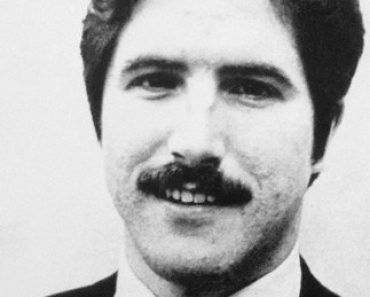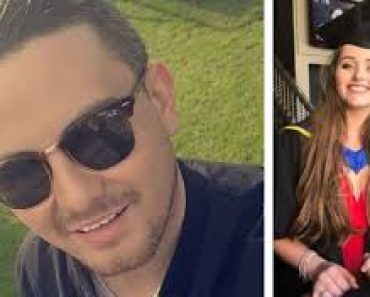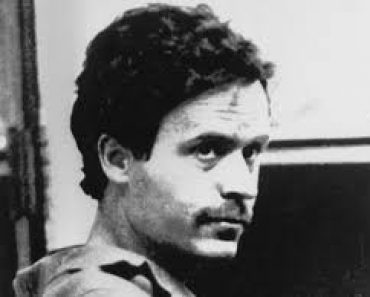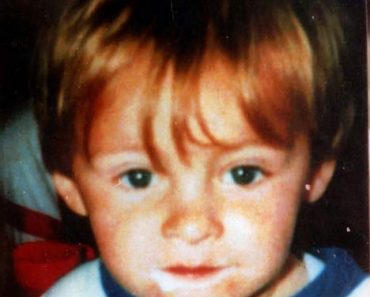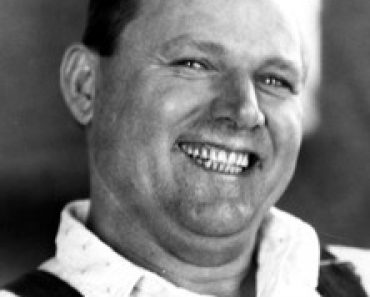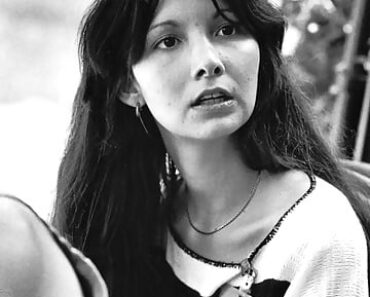Angus Sinclair | Serial Killer

Angus Sinclair
Born: 1945
World’s End Murders
Scottish Serial Killer
Crime Spree: 1961 / 1977 / 1978
Death: March 2019
The World’s End Murders is the name given to the murders of two teenage girls in October of 1977. Christine Eadie, 17, and Helen Scott, 17, were last seen alive leaving the World’s End Pub in Edinburgh’s Old Town. The only person to stand trial accused of the murders, Angus Sinclair, was acquitted in 2007 in controversial circumstances.
Following the amendment of the law of double jeopardy, which would have prevented his retrial, Angus Sinclair was re-tried in October 2014 and convicted of both murders on November 14, 2014.
Angus Sinclair has been described as Scotland’s worst serial killer. He is thought to have killed four other women, in addition to Eadie and Scott, all within a seven-month period.
The Background
On the night of October 15 1977, Christine Eadie and Helen Scott, both 17, were seen leaving the World’s End Pub at closing time, the final stop on a Saturday night pub crawl. The following day, Christine’s naked body was discovered in Gosford Bay, East Lothian, by hikers. Helen’s body was found unclothed six miles away from Christine’s, in a cornfield. Both girls had been gagged, beaten, raped and strangled. No attempt had been made to conceal their bodies.
In late 1977, police conducted a high-profile criminal investigation, collating over 500 suspects and taking over 13,000 statements from members of the public. Despite their efforts however, they were unable to identify a killer. The case commanded widespread attention in the Scottish media at the time, and a photo-booth picture of the two girls was used by police in their appeals for information.
At the time, the media reported that several witnesses had told police they had seen Helen Scott and Christine Eadie sitting near the public telephone in the bar, talking with two men. Speculation that the killings had been the work of two men was heightened when it was revealed that the knots used to tie the girls’ hands behind their backs were of different types.
Cold Case Review
In 1997, Lothian and Borders Police’s cold case unit instructed further forensic work to be undertaken in the case, reflecting improvements in DNA profiling technology since the murders occurred. This resulted in the isolation of a DNA profile of a male, found on both girls. The DNA of the original 500 suspects was analysed and compared to the new sample, but there was no match.
On October 8, 2003, following the broadcast of a reconstruction on the BBC’s Crime Watch program, the incident team received a phone call from a man who claimed he was walking near Gosford Bay on the night of the murders, and that he saw a suspicious vehicle. He said it was a work van and it was being driven erratically.
On October 15 2003, it was reported in the press that Lothian and Borders Police had enlisted the help of the Forensic Science Service to try and determine the identity of the person whom the unknown DNA sample belonged to. The unknown sample partially matched over 200 profiles in the National DNA Database.
Angus Sinclair
On November 25 2004, Angus Sinclair, a man who lived in Edinburgh at the time of the murders, was detained under section 14 of the Criminal Procedure (Scotland) Act 1995 in connection with the murders. Mouth swabs were taken for analysis.
On 31 March 2005, Sinclair was arrested and charged by Lothian and Borders Police. On April 1, 2005, he was charged with the rapes and murders of the two girls in October 1977. He made no plea at this time and was remanded in custody.
The Trial
On August 27, 2007, the trial of Angus Sinclair got under way in Edinburgh. The indictment alleged that on the night of 15–16 October 1977, Sinclair and Gordon Hamilton (Sinclair’s brother-in-law who had since died) persuaded, or forced, the two girls into a vehicle and held them against their will.
It was further alleged that Sinclair then drove Eadie to Gosford Bay, Aberlady, and there attacked, stripped and gagged her with her own underwear. He then bound her wrists, before raping her and strangling her. He was further accused of raping and murdering Scott in much the same way, after driving her to a road near Haddington.
Angus Sinclair pleaded not guilty and lodged two special defenses, one of consent and one of incrimination, stating that any sexual activity between him and the two girls had been consensual, and furthermore if they had come to any harm, the person responsible was Gordon Hamilton, now a dead man.
Angus Sinclair

The jury of nine women and six men began hearing evidence on August 28, 2007. No eyewitness evidence was presented and was wholly circumstantial.
On September 3, 2007, the advocate depute led evidence who spoke to the fact that Angus Sinclair owned a Toyota Hiace caravanette at the time of the murders, that he had soon after destroyed. As a result, she confirmed that police were unable to carry out forensic tests on any of the fabrics or seat upholstery inside the vehicle.
On September 4, 2007, a forensic scientist gave evidence that semen obtained from a vaginal swab of Ms. Eadie, and semen obtained from a vaginal swab of Scott shared the same DNA profile.
On September 7, 2007, another forensic scientist gave evidence that semen matching swabs taken from Angus Sinclair was found mixed with cells with the same DNA profile as Scott, on a coat belonging to Scott. He also told the court how brothers and sisters of Sinclair’s dead brother-in-law, Gordon Hamilton, had provided samples for DNA testing, and that the results of these tests had been compared with the semen found in the bodies of the victims. He explained that the results obtained are what he would expect, if semen found in the victims had come from a brother of the surviving Hamilton’s. Whitaker was the final witness in the Crown case.
Angus Sinclair
On the afternoon of September 7, 2007, senior counsel for the defense made a submission that Angus Sinclair had no case to answer in respect of the charges libeled, due to an insufficiency of evidence. In particular, he contended that the Crown had failed to lead evidence that Angus Sinclair had been involved in acting with force or violence against the girls, and that the advocate depute had not led evidence to prove that any sexual encounter between the accused and the girls had not been consensual.
On September 10, 2007, the trial judge had to agree and Angus Sinclair was formally acquitted.
The Aftermath
Following the conclusion of the trial it was revealed that Angus Sinclair is a convicted murderer and serial sex offender, who is currently serving two life sentences at HMP Peterhead. In 1961, he pleaded guilty and was convicted of the culpable homicide of eight-year-old Catherine Reehill and served six years in prison. In 1982, he pled guilty to 11 charges libelling various rapes and indecent assaults committed against young boys, and was sentenced to life imprisonment. In June 2001 he was given another life sentence for the murder of 17-year-old Mary Gallagher in November 1978. The teenager had been dragged into bushes, sexually assaulted, had had her throat cut and a ligature tied round her neck. Again Sinclair failed to accept any responsibility for the crime and denied all knowledge. This despite being found guilty by a majority verdict and faced with the reality that the chances of a DNA sample matching anyone other than Sinclair, were “a billion to one.” Angus Sinclair was only caught after a cold case review by Strathclyde Police revealed the presence of new DNA evidence not uncovered during the initial investigation.
On March 22, 2011, in direct response to the Scottish Law Commissions findings on the issue of double jeopardy, the Scottish Parliament passed the Double Jeopardy (Scotland) Act 2011. The act makes various provisions for circumstances when a person convicted or acquitted of an offence can be prosecuted anew.
Return To Angus Sinclair

On March 14 2012, the Crown Office issued a press statement saying that the Procurator Fiscal had instructed Lothian and Borders Police to re-open the investigation into the murders of Christine Eadie and Helen Scott, following the introduction of the Double Jeopardy (Scotland) Act 2011.
Three judges set aside eight days of court time in October 2013 to hear a bid from prosecutors pressing for Angus Sinclair to stand trial for the second time. On April 15 2014, the Crown was granted permission to bring a new prosecution against Angus Sinclair.
The trial commenced on October 13, 2014. The prosecutor was Frank Mulholland, the Lord Advocate, and the judge was Hugh Matthews, Lord Matthews. At one stage the jury visited the scene of the murders in East Lothian. On November 14, 2014, Angus Sinclair was convicted of the murders of Helen Scott and Christine Eadie on October 15 1977. Sentenced to a minimum prison term of 37 years, Angus Sinclair would be 106 years old before being eligible for parole.
The Death of A Killer
Angus Sinclair died, in March 2019, at the age of 73 following a series of strokes.

source: wikipedia | BBC | murderpedia |
This site contains affiliate links. We may, at no cost to you, receive a commission for purchases made through these links






